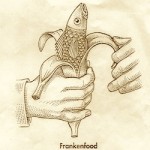By Catherine Haug, May 19, 2018 (image, right, from Organic Consumers Association and used by permission)
This is an important alert for all who want to avoid GMO foods. Please share this with others, and write to your legislators about proposed use of this new term on genetically modified foods.
Because GMO (Genetically Modified Organism) and GE (Genetically Engineered) are now commonly known as foods to avoid, the USDA has proposed a different term for a new labeling law (2018) to replace GMO or GE: Bio-Engineered (BE). This newer term, while fairly common in scientific circles, has not been used much in common parlance. It also does not sound as scary as the more familiar terms. Hence if people see this on a food label, they will be less likely to refuse it.
But have no doubt about it: BE foods are just as harmful for your health and that of your pets and livestock, as GMO or GE foods.
Read on for more about the negative impact of these terms. See also: “Food Evolution”: New GMO technology even worse than Roundup-resistance and How much glyphosate is in your body? (more…)



